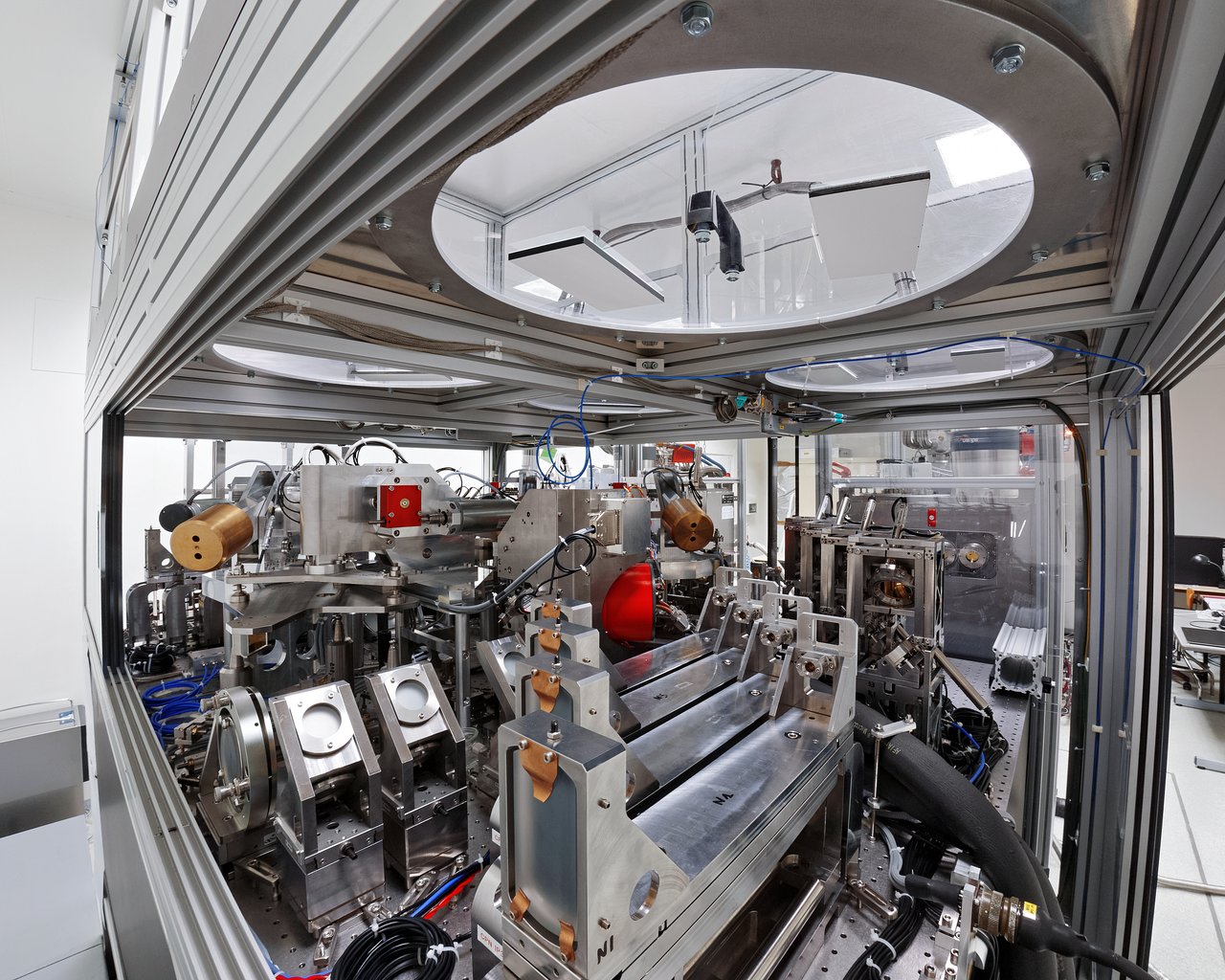MATISSE
Multi-AperTure mid-Infrared SpectroScopic Experiment
MATISSE (Multi AperTure mid-Infrared SpectroScopic Experiment) is a new spectro-interferometer, part of the second generation of instruments for the Very Large Telescope Interferometer (VLTI) at ESO’s Paranal Observatory in Chile. MATISSE builds on the experience gained with the VLTI’s first generation instruments, in particular AMBER and MIDI, allowing astronomers to obtain interferometric images with higher precision over a wider wavelength range.
MATISSE is capable of combining the light from up to four of the VLTI’s Unit Telescopes (UTs) or Auxiliary Telescopes (ATs), which is currently only achieved by PIONIER and GRAVITY. Combining these telescopes and observing simultaneously will greatly increase the detail of data obtained. MATISSE operates on the principle of optical long-baseline interferometry, which superimposes the light of an astronomical object from two or more telescopes. The result is an interference pattern that contains the information about the appearance of the object, and a real image can then be reconstructed.
MATISSE observes infrared light, which lies between visible and microwave wavelengths in the electromagnetic spectrum. It is too long to be seen by the human eye but not as long as the wavelengths collected by ALMA. Infrared light can be split up further into bands of certain wavelength ranges, and MATISSE will specifically observe in the L, M, and N bands, which are in the mid-infrared region.
MATISSE is designed to address a broad range of important science goals. In particular, it will contribute to several fundamental research topics in astronomy, focusing on the inner regions of disks around young stars where planets are formed, the evolution of stars at different stages of their lives, and the environment around black holes in active galactic nuclei (AGN). The instrument’s characteristics will also shed light on other fields, including the study of the birth of massive stars; the structure, dynamics and chemistry of evolved stars; the early evolution of minor bodies in the Solar System; exozodiacal dust disks of stars; and the properties of hot Jupiters.
In April 2012, MATISSE passed its final design review and in September 2017 was transported to Chile for integration into the Very Large Telescope Interferometer (VLTI) at ESO’s Paranal Observatory. MATISSE saw first light in February 2018.
This instrument offers unique and fascinating observational capabilities: new spectral observing windows at the VLTI and mid-infrared imaging performed with up to four Unit Telescopes or Auxiliary Telescopes. Its high-resolution observations will contribute to answering several fundamental astrophysical questions and will surely lead to unexpected discoveries.
MATISSEThe authoritative technical specifications as offered for astronomical observations are available from the Science Operations page.
|
